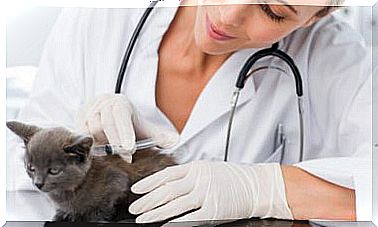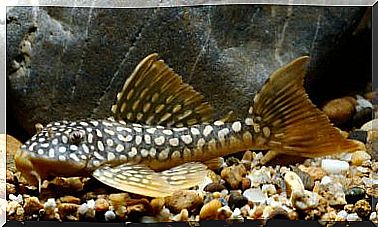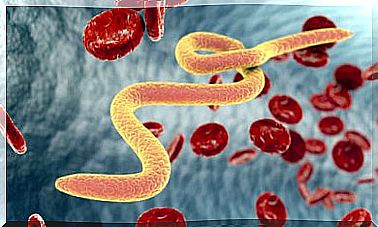Wobbler Syndrome: Causes, Symptoms And Treatment

Wobbler syndrome, or cervical spondylomyelopathy (CSM), is a disease that affects the cervical spine of large dogs. Early diagnosis is essential to avoid severe complications, such as disability or neurological deficit. We summarize the causes, symptoms and treatment of this disease.
Woobler syndrome: characteristics and symptoms
Woobler syndrome encompasses various chronic degenerative disorders that often cause motor problems and neurological damage. It happens when the spinal cord and the nerves in the neck are subjected to excessive compression (myelopathy).
The disease only becomes visible when the patient begins to complain of constant pain in the neck. A nonspecific symptom that is also very difficult to recognize early in dogs.
For this reason, most diagnoses are usually recognized after the appearance of more advanced neurological signs. It usually happens when the dog starts to wobble, and loses its balance easily.
- The main symptoms of Woobler syndrome are:
- Walking unsteady and wobbly, usually with short steps.
- Neck pain or stiffness.
- Loss of muscle mass in the shoulders and forelimbs.
- Tiredness and weakness
- Partial or complete paralysis.
- Swelling in the front and back legs.
- Difficulty getting up and moving.
Woobler syndrome: causes and genetic inheritance
It is known that a myelopathy derives from the reduction of the bony canal that surrounds the soft spinal cord (vertebral canal). This reduction is usually caused by a bone malformation or by a slipped intervertebral disc.
The specific etiology of Woobler syndrome is unknown. But this knowledge, added to the compatibility of diagnoses, allows us to presume that genetic inheritance is key.
Almost 50% of diagnosed cases affect dogs of the Doberman, Mastiff and Great Dane breeds. A greater predisposition is also observed in the following breeds: Irish Wolfhound, Basset Hound and Rottweiler.
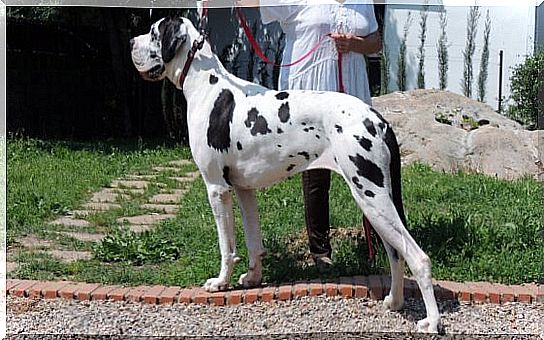
Another determining factor is the size of the animal. The rapid growth of large dogs is supposed to make them more susceptible to degenerative diseases.
About 70% of Wobbler syndrome diagnoses manifest themselves in large and giant dogs. Some rare cases have occurred in small or miniature dogs of the Yorkshire, Pinscher and Chihuahua breeds.
Diagnosis of Woobler syndrome in dogs
The differential diagnosis for Wobbler syndrome is made by observing the spine and vertebrae. To do this, the vet will request an X-ray test, a CT scan, an MRI, and a myelogram.
Normally, the vet will also order blood and urine tests to rule out other more frequent pathologies. The professional will also take into account an analysis of the animal’s picture and its genetic profile.
Treatment of Woobler syndrome in dogs
Treatment consists of surgery to relieve and decompress pressure on the spinal cord. But its viability will depend on the physical condition of the animal and the location of the compression in the medulla.
When the animal is very weak or old, the vet may choose not to perform the surgery. The probability of death or irreversible neurological damage is so high that it does not justify exposing the animal to this risk.
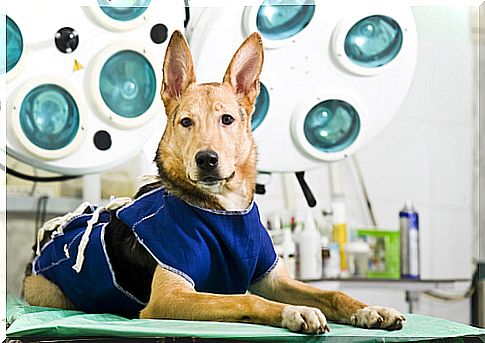
In these cases , treatment is usually outpatient to reduce pain and improve the quality of life of the dog with Woobler syndrome.
Recovery from surgery
To guarantee an adequate recovery, the dog must comply with a rest period of two to three months. It is essential to prevent the animal from jumping or running so as not to impair adhesion and bone union.
As long as the dog cannot walk, it is important to keep it on soft and smooth surfaces. Ideally, the animal should remain under observation to avoid the formation of ulcers and wounds.
Physical therapy will be essential to speed up recovery and strengthen the dog’s body. It also prevents muscle wasting and atrophy from lack of movement and exercise.
Woobler syndrome: is it possible to prevent it?
As it is associated with genetic factors, it is not possible to speak of a specific prevention for Woobler syndrome. But you can strengthen your best friend’s body and immune system for healthier development.
Therefore, it is essential to provide a balanced diet and regular physical activity. In addition to respecting their preventive medicine and regular visits to the vet.
